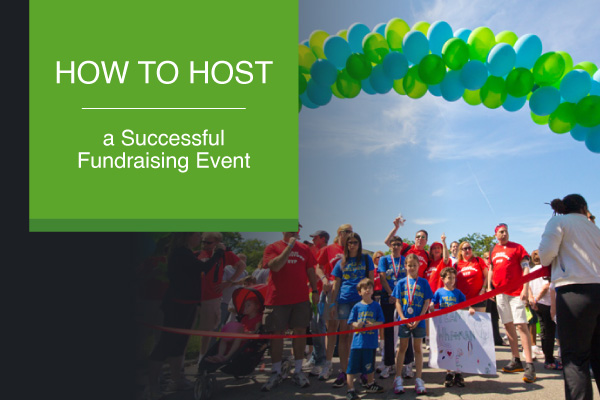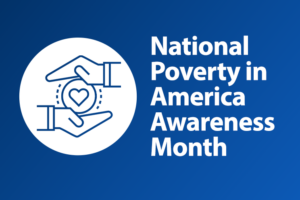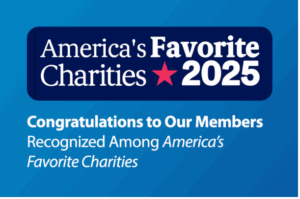Brad Dowhaniuk of 99Pledges | February 6, 2020
How to Host a Successful Fundraising Event
While #GivingTuesday and the holiday giving season may be over, another year of generosity is just ramping up. Nonprofits — and employers that host charity fairs — have opportunities to raise much-needed funds through special events, which can help fuel the work of nonprofits all year long, and it’s important to make the most of them.
One effective way to bolster fundraising initiatives is to host an event in conjunction with your broader campaign. However, given how busy you are, hosting an event may seem easier said than done!
We’ve outlined six steps to help your fundraising event go to plan:
- Plan well in advance.
- Market your event far-and-wide.
- Optimize your digital tools for increased engagement.
- Use trending methods for collecting donations.
- Host an enjoyable event.
- Incorporate corporate philanthropy.
If you haven’t started planning your event yet, it’s time to get started. Let’s dive in!

1. Plan well in advance.
Just as you plan other initiatives weeks to months in advance, treat your fundraising events in the same manner.
There are a few planning steps to keep in mind:
-
Brainstorm event ideas. Whether you’re looking for cause-related, sports team, or even parent-teacher organization fundraising ideas, take care to choose the perfect event for your unique organization and community.
-
Start nailing down specifics. This is where considerations of date and time, venue, budget, etc. come into play.
-
Spread the word. Create a strong strategy for marketing your event to ensure it performs at maximum potential.
-
Fundraise! Gather donations associated with your causes of choice before, during, and after the event.
Allocate adequate time to each step in the planning process. Not only are there many factors to get in order, but as with any live event— things can go wrong! You want to ensure there is plenty of time in your planning schedule to mitigate any disasters and resolve any confusion.

2. Market your event far and wide.
Innovations in methods of communication mean there are a ton of ways to get the word out about your organization’s fundraising event. You should take advantage of every method available to you.
Consider using the following methods in marketing your fundraising event:
-
Email. Focus on creating an email, perhaps even an email newsletter, that’s conversational, concise, and informational. Most emails are read on mobile devices, and people using those devices are unlikely to dedicate much time to reading an email.
-
Direct Mail. Don’t neglect direct mail in favor of technology-fueled methods. Many supporters still respond to this type of communication, and you need to accommodate them as well.
-
Social Media. Create highly shareable content and broadcast it to your supporters via social media. Encourage these supporters to share this content with their own networks, further spreading your message. One of the best ways to share your event in this way is through Facebook events.
Pick and choose which methods make the most sense for your organization and donor base. For example, if you’re dealing with a more traditional base that tends to stray from social media platforms, place a focus on direct mail and email. However, if your base is social media savvy (and you’ll likely have at least a few supporters who are), then choose which platforms can best house your message and reach your supporters.
Finally, start marketing early! The new year is a busy time for your organization and donors alike, and if you want to fit into supporters’ calendars, you need to tell them about your event well in advance.

3. Optimize your digital tools for increased engagement.
Once you’ve successfully gotten the word out about your event, you’ll experience a deluge of visitors to your organization’s digital tools. In particular, your website and online giving platform. Ensure those tools are performing at their best in preparation for the increased support:
Website
Your website is often the first place potential supporters visit upon first discovering your nonprofit – or for employers, your philanthropy efforts – as well as the first place many existing supporters look for information regarding opportunities to give.
There are a few things to keep in mind when making sure this tool is up-to-par:
-
Make sure your page is both attractive and educational. Nonprofits, check out Morweb’s list of best nonprofit websites for inspiration. Employers, talk with your workplace giving provider to take advantage of your digital platform’s many features and functionality.
-
Include an events calendar, so visitors can quickly scan for upcoming opportunities.
-
Prominently display a link to your organization’s online giving platform.
-
Include a lead capture form for new supporters that would like to receive future information.
Your website is your most powerful tool for delivering information to a ton of supporters in little time. Make sure it’s well prepared to do so.
Online Giving Platform
Your online giving platform is helpful before, during, and after your event. Supporters giving in advance of the event, attendees giving during the event, and even donors giving post-event— it’s an important resource throughout the duration.
Ensure this resource is seamlessly branded to your organization, so supporters feel comfortable giving through it. Further, make sure the platform is optimized for on-the-go use as that’s most likely how donors using it at the event will access it.

4. Use trending methods for collecting donations.
The internet has revolutionized the ways in which we collect donations, and these methods are trending for a reason.
They’re easy, often inexpensive, and are a great way to magnify your event’s fundraising potential. Check out a few of the top methods below:
-
Peer-to-Peer Fundraising: Create a peer-to-peer fundraising campaign for your organization, with supporters creating their own individual pages along with it. Supporters then share their personal pages with their larger support network, with friends and family donating in support of their loved one. These donations are then routed back to your main campaign.
-
Crowdfunding: Create a crowdfunding page and share it with your supporters. These donors then share this page with their friends and families, exposing your fundraiser to new faces. These new donors can then give directly to your page.
-
Text-to-Give: Set up a text-to-give number and keyword and share it with supporters at your event. With it, supporters can begin the giving process with the ease of sending a single text message.
-
Pledge Fundraising: This pairs well with a fitness-based fundraiser, such as a walk-a-thon. Use a pledge fundraising platform, such as 99Pledges, to create a campaign for your event with participants creating pages in conjunction with it. Participants then collect pledged donations (those promised for a later date) corresponding to their participation in your event.
Each of these trending digital donation collection methods will pair differently with your fundraising event, depending on what type of event you’re hosting.
For example, peer-to-peer and pledge methods need to be employed before the event, usually in anticipation of a donor’s participation in your event. On the other hand, crowdfunding and text-to-give methods can be used during live events.

5. Host an enjoyable event.
There’s no question, fundraising is not easy – and people are busier than ever. Not only are donors receiving increased communications from the nonprofits they support, but they’re busier in their personal lives as well! With the new year comes a new commitment to accomplishing goals, which means people are more reluctant to leave their offices.
Therefore, if you’re going to ask supporters to not only give to a cause but to attend an event to do so— you need to make it worth their time.
For example, check out this event that was hosted by America’s Charities member Canine Partners for Life. The nonprofit, which specializes in training service dogs that assist people with a wide variety of disabilities, drew inspiration from its mission. Hosting an event that included a puppy kissing booth and “cow bingo,” the organization created a fun experience while educating supporters about its cause.
Don’t host an event that’s educational to the point of being uninteresting. Instead, host an event that provides value to charitable supporters. Whether that’s something fun (but involved) like a puppy kissing booth or something more low-key and fitness-related like a walk-a-thon fundraiser, there are plenty of ways to raise money while maintaining donor interest.

6. Incorporate corporate philanthropy.
Last but not least, incorporate corporate philanthropy programs when possible to immediately increase the impact of donations at your event.
These programs are a way for businesses to express their philanthropic side, by giving to your organization and benefitting from the association. There are three common program types you should look out for: Volunteer Grants, Matching Gifts, and Corporate Sponsorships.
Through volunteer grant programs, companies match the number of hours their employees volunteer with an approved nonprofit. If your event is run with the help of volunteers, it would be worth it to see if any of these volunteers are match-eligible.
Matching gift programs involve companies pledging to make a donation matching the financial gift made by their employee to an approved nonprofit. A match-eligible donor giving at your event can immediately double the impact of their gift, and it would be worth it to encourage donors to investigate their status. Nonprofits, check out these tips, and free guide, to take advantage of matching gift programs. Employers, download this definitive guide to corporate matching gifts.
Finally, with corporate sponsorships, a company donates some amount of money (or an in-kind gift of supplies) to help fuel your event itself. In return, you include their name somewhere on the event— whether on a flyer, posters, or even event t-shirts.
From outreach to corporate philanthropy program research, hosting a successful fundraising event is no small task.
With a bit of planning, however, your organization can be the ultimate host this giving season. By incorporating these six tips in your preparation, you’ll be hosting a successful event in no time!
About the author: Brad Dowhaniuk is the co-founder of 99Pledges, which provides schools and teams with an easy-to-use, web-based fundraising solution to manage and drive success in Fun Runs, jog-a-thons, baseball hit-a-thons, and much more.

Get Resources and Insights Straight To Your Inbox
Explore More Articles
Congratulations to Our Members Recognized Among America’s Favorite Charities
Each year, The Chronicle of Philanthropy releases its list of America’s Favorite Charities—the 100 nonprofits that raise the most from individual donors, foundations, and corporate…
Read ArticleGet Resources and Insights Straight To Your Inbox
Receive our monthly/bi-monthly newsletter filled with information about causes, nonprofit impact, and topics important for corporate social responsibility and employee engagement professionals, including disaster response, workplace giving, matching gifts, employee assistance funds, volunteering, scholarship award program management, grantmaking, and other philanthropic initiatives.





